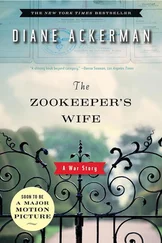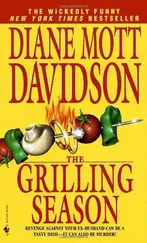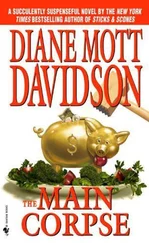Remember blue-green algae, to whom we owe our oxygen-besotted lives? One controversial idea is seeding the Antarctic Ocean with iron to trigger the growth of such algae. Algae thrive by absorbing sunlight and carbon dioxide, which they use to forge chlorophyll, but for that they need iron. As algae soak up carbon dioxide from the atmosphere, they sink down to the ocean floor and die. Scientists aren’t sure yet if widespread “iron fertilization” is safe for ocean animals, so they recently tried a small test, dumping iron powder into an Antarctic whirlpool (so that it wouldn’t spread). Sure enough, a giant bloom of algae diatoms arose, sucking carbon dioxide from the air, and after a few weeks many diatoms carried pearls of CO 2to the bottom and died. Would it work safely on a large scale? That’s the big unknown. Geoengineering is a highly controversial plaything. We won’t know except by trying, and a bad outcome could be deadly. We’ve already been geoengineering the planet for decades, unintentionally, by saturating the air with CO 2and the oceans with fertilizer—not with good results.
Geoengineering and adaptation ideas run the gamut from shucks-why-didn’t-I-think-of-that to plain nutty. The monochrome Earth method includes painting cities and roads white, covering the deserts in white plastic, and genetically engineering crops to be a paler color—all to reflect sunlight back into space. Or installing roof tiles that turn white in hot weather, black in cold. More bizarre tech fixes include firing trillions of tiny mirrors into space to form a hundred-thousand-mile sunshade for Earth, or building artificial mini-volcanoes that spew sulfur dioxide particles into the atmosphere to block sunlight. There’s even been a “modest proposal” that we genetically engineer future humans to be tiny so that they’ll need fewer resources.
At the other end of the globe, on the Norwegian coast, a colossal Carbon Capture Storage facility, owned jointly by Norway and three oil companies, is bagging carbon emissions before they’re released into the atmosphere and storing them in underground vaults. Carbon prisons are still too expensive to be practical everywhere, and not worry-free, but many countries are following suit. In a quest for the first technology that can efficiently, economically pull CO 2out of the air, Richard Branson is offering a tempting prize of $25 million. [7] In Earthmasters: The Dawn of the Age of Climate Engineering , Clive Hamilton makes the point that in the United States, climate change used to be a bipartisan concern, but conservative activists have lumped global warming with gun control and abortion rights as part of a scurrilous liberal agenda, not something apolitical and innately global but a position the liberals have cooked up. Knowing whether someone believes in global warming or not, you can safely guess his or her politics. As one Republican meteorologist noted, it’s become “a bizarre litmus test for conservatism.” And so they deny the science supporting it on political grounds, which makes no sense at all. A cringe-inducing example of that was when President George W. Bush, at the G8 Summit in 2008, having rejected climate change targets, turned back to his colleagues as he was leaving the closing session, raised a defiant fist, and said light-heartedly, “Good-bye from the world’s biggest polluter.” http://www.independent.co.uk/news/world/politics/bush-to-g8-goodbye-from-the-worlds-biggest-polluter-863911.html .
Research by the cell biologist Len Ornstein shows that if the Australian Outback and the Sahara were forested, they’d absorb all of the CO 2we’re pumping into the atmosphere every year. Obviously not an easy venture, it’s technologically possible. Grassroots indigenous, nongovernmental groups have already planted over fifty-one million trees in Africa. In time the forests, absorbing water from the soil and releasing it back into the atmosphere through their leaves, will generate their own clouds, rain, and shade, cooling things down, and providing the bonus of sustainably grown wood for their host countries.
Meanwhile, the eastern coast of the United States, from Boston to Florida, needs widespread sea barriers, preferably of sand, and also artificial barriers and gates wherever they’re workable. They needn’t be poetic knights of deliverance like London’s. They might even be a version of the natural reefs and oyster beds that once flanked the American coast.
Trillions of oysters lined the eastern shores, building up knuckle-shelled beds that blunted the storm surges, capturing waves on the reefs, where they collapsed before they could blast down the estuaries. The Hudson River estuary was famed for the quality of its oysters. Oysters closest to shore also filtered the water, which made the habitat ideal for marsh grasses, whose root systems, clinging to the land, kept it from eroding.
We’ve largely destroyed that long, sweeping natural barricade. Now, as hurricane surges pummel cities and harbors, we’re starting to realize what we’ve lost, not just in small innocent-seeming meals of wild-gathered shellfish but through toxic runoff from cities and farms. And it’s the same the world over—85 percent of the world’s oyster reefs have vanished since the end of the nineteenth century.
To protect New York City, the landscape architect Kate Orff favors an archipelago of artificial reefs built from piles of “rocks, shells, and fuzzy rope,” to attract oysters, because oyster beds naturally act as wave attenuators. In time, the oyster-encrusted barriers would filter the water and also serve as a kind of ecological glue. “Infrastructure isn’t separate from us, or it shouldn’t be,” Orff explains. “It’s among us, it’s next to us, embedded in our cities and public spaces.”
“Mariculture,” I say, floating the image of a vertical ocean garden in my mind, as I climb into a heavy, buoyant, safety-orange worksuit designed for extended periods on cold water.
“Think of it as 3D farming that uses the entire water column to grow a variety of species,” Bren Smith says, closing his own suit over a black-and-red-checked flannel shirt and jeans, zipping the fish teeth of ankle zippers, and latching the belt. This is just the beginning of his vision for an elaborate network of small, family-owned, organic, and sustainable aquafarms arranged along the East Coast—oysters in beds under curtains of kelp—to help subdue storm surges while also providing food and energy to local communities.
Climate change is especially hard on fishermen and on farmers. The thirty-nine-year-old seaman sitting across from me in a dinghy on a frostbitten morning in Stony Creek, Connecticut, is both. Bren has a slender build with powerful arms and shoulders, a sign of his rope-heaving, cage-hauling trade. Although he now shaves both face and head, his plumage for years was natural red hair and long beard, hints of which remain. With his flame-orange watch cap, cinnamon five-o’clock shadow, and rusty-blond eyebrows, he is a study in reds, the long wavelengths of visible light.
We’re not anticipating a stumble overboard, but like many a fisherman Bren doesn’t swim, and the suit adds needed warmth through high winds and snow-thunder in the recent cannonade of winter storms.
A perennial mariner, he grew up in Petty Harbour, a five-hundred-year-old Newfoundland town with eleven painted wooden houses filled with fisherfolk and a salt-peeled wharf with jostling boats. On the rocky shore, a boy could find lobster cages, floats, anchors, ropes, seaweed-tangled shells, fish and bird skeletons, and tall tales. So it’s not surprising that, at fifteen, he dropped out of high school and ran away to sea. In Maine he worked on lobster boats, in Massachusetts on cod boats, and in Alaska’s Bering Strait on trawlers, longliners, and crab boats. At one point he factory-fished for McDonald’s.
Читать дальше












